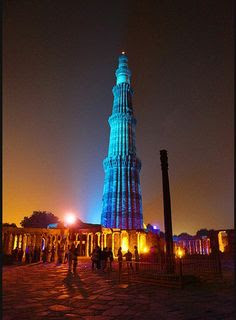Best Tourist Places In Delhi
 |
| INDIA GATE |
India Gate is the pride of Delhi. A forcing structure, the door was inherent memory of the 90,000 Indian warriors who set out their lives amid World War I. The India Gate is 42 meters high and is a mainstream as an unwinding zone amid the late spring nights and a well known excursion spot amid winter. At first called All India War Memorial, the entryway was composed and worked by Lutyens who is likewise credited with the outlining of New Delhi, the capital of India is the best tourist place.
Lodgings of India organize go to India Gate. The names of the considerable number of warriors who kicked the bucket amid the World War I are recorded on the dividers of the Gate. Amar Jawan Jyoti, an endless fire, smolders 24 hours. This was lit to pay home to the fighters who were executed amid the Indo-Pak war in 1971.Amid the night, India entryway is stunned by floodlit and the wellsprings close-by are lit up with shaded lights. There was the marble statue of King George under the red sandstone top of the covering. The covering was likewise outlined and worked by Lutyens.
 |
| RED FORT |
The historical monuments of our country are innumerable. Each monument speaks the history of our ancient India in its own way. The most majestic monument among those is the Red Fort, the monument of Red Stone. The Red Fort was originally named Lal Qila meaning Hindustani; later named Red Fort for the imposing red sandstone walls. The Red Fort is located in New Delhi in the west bank of river Yamuna and best for tourist places. The history of the monument rolls back to the year 1648 when it was built by Shah Jahan, the Mughal Emperor. It stands as a beautiful symbol of India. The Red Fort was built as the palace for Shahjahanabad and it was the residence for Mughal Emperors of India till 1857. Due to this reason, the Red Fort was also called the “Blessed Fort”.
 |
| QUTUB MINAR |
Qutub Minar is one of the well known verifiable landmarks of the India and best for tourist place. It is called as the second tallest minar of India (around 73 meters). Qutb Minar has been included as one of the best UNESCO World Heritage Sites. It is situated in Delhi and manufactured utilizing red sandstone and marble as a part of the Indo-Islamic structural style. Qutub Minar is count the best place in delhi. The base distance across of this minar is 14.3 meter and top measurement is 2.7 meter. Its stairs contains 379 stages. It was begun working in 1193 by the Qutb-ud-racket Aibak however carried on by his successor named Iltutmish. Its fifth and last story was developed by the Firoz Shah Tughlaq in 1368. There are numerous other antiquated and medieval structures and demolishes encompassing the minar in the Qutb complex.
 |
| LOTUS TEMPLE |
Lotus sanctuary is one of attractions of New Delhi.Lotus sanctuary is the top tourist place. As well as a whole realize that lotus sanctuary has a marvelous design and incredible verifiable significance. I realize that everyone needs to know the history behind it and many foreigner tells that is famous place in delhi. Here in this post I am going to educate you concerning verifiable significance of lotus sanctuary and great engineering of it. Marble, concrete, dolomite, and send were utilized as a part of development of lotus sanctuary. On the off chance that you look this sanctuary from top view it would seem that half opened lotus sanctuary. Development of this engineering takes 10 years to finish. There are 800 individuals who have worked in development of this sanctuary. This group incorporates designers, experts, and specialists. Outside of this sanctuary there are nine reflecting pools. This sanctuary has nine entryways and one of the best and top place. Stature of lotus sanctuary is 40 meter.
 |
| HUMAYUN TOMB |
A standout amoungst the most eminent tombs worked in Delhi amid the Mughal principle, the Humayun's Tomb is a great case of Persian engineering. The Humayun's Tomb was appointed in 1526, nine years after the demise of Humayun, by his dowager Hamida Banu Begum. Developed out of red sandstone, the Humayun's Tomb was the primary ever plant style tomb to be built in India and for tourist place. The Humayun's Tomb remains in the focal point of Charbagh style of patio nurseries complete with pools connected by channels. The Humayun's Tomb served as an early case for other Mughal tombs which were worked after some time, for example, the Akbar's tomb in Sikander, the tomb of Ghiyas-ud-Din Tughlak at tughlakabad , the tomb of Sikander Lodi in the Lodi Gardens and the Taj Mahal.
Nc place
ReplyDelete